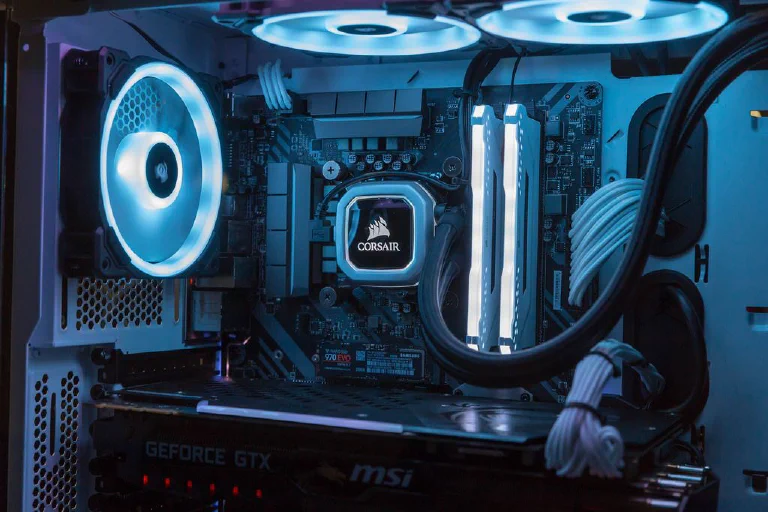Alright, let’s have a little chat. If you’ve ever felt the soul-crushing despair of waiting for a game to load, watching a progress bar mock you for what feels like an eternity, or hearing your old mechanical hard drive click and whir like it’s about to achieve sentience and then die… you’ve come to the right place. As a guy who has spent more years building and fixing PCs than I care to admit, I can tell you with absolute certainty: the single most impactful upgrade you can make to any computer is swapping that ancient spinning rust bucket for a Solid State Drive (SSD). It’s the difference between a rusty Lada and a teleportation device.
But here’s the kicker. In 2025, the world of SSDs has become a jungle of confusing acronyms (NVMe, SATA, PCIe 5.0), questionable marketing claims, and a thousand different models that all look suspiciously similar. How are you supposed to know which one is the real deal and which one is just a fancy sticker on a slow piece of tech?
That’s where I come in. I’ve waded through the technical muck for you. I’ve sifted through the benchmarks, analyzed the controllers, and figured out which of these drives give you the most bang for your buck, whether you’re building a top-tier gaming rig, reviving an old laptop, or just need a lightning-fast drive for your data on the go. So grab a drink, and let’s break it down in a way that actually makes sense. This is my no-BS guide to the fastest SSDs of 2025.
SSD Boot Camp: A Crash Course for 2025
Before we start throwing model numbers around, you need to understand the battlefield. Choosing an SSD isn’t just about picking the biggest capacity you can afford. It’s about understanding a few key technologies that determine whether you’re buying a Formula 1 car or just a regular sedan with a fancy spoiler. Trust me, five minutes here will save you from a world of buyer’s remorse later.
The Interface War: Why Your Mom’s SATA is Not Your NVMe
This is the most important difference, so listen up. An interface is just the “plug” and the “language” a drive uses to talk to your computer.
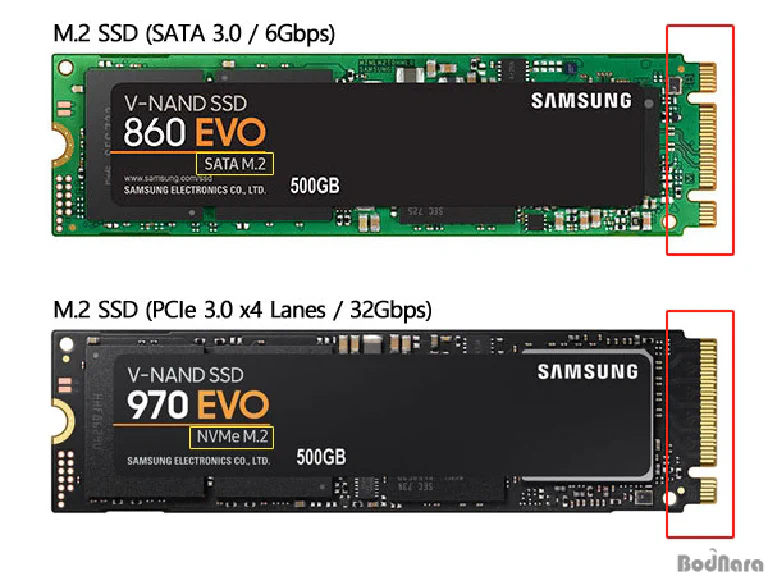
SATA III: Think of this as a reliable country road. It’s been around forever, it’s compatible with almost everything, and it gets the job done. A SATA SSD is still a million times faster than an old hard drive. But its speed is capped at around 560 MB/s. It’s physically impossible for it to go faster.
NVMe (via PCIe): This is the German Autobahn. It’s a modern standard designed specifically for the insane speeds of flash memory. Instead of a clunky cable, these drives are usually little sticks (called the “M.2 form factor”) that plug directly into your motherboard.
- PCIe 4.0: This is the current, mainstream standard for fast drives. It allows for speeds up to 7,000 MB/s. This is what you’ll find in most modern gaming PCs and the PlayStation 5.
- PCIe 5.0: This is the new, bleeding-edge tech. It doubles the theoretical speed again, pushing past 12,000 MB/s. It’s ludicrously fast, generates a lot of heat, and frankly, is overkill for 99% of people right now.
The Bottom Line: For a new PC build in 2025, you should only be looking at NVMe PCIe 4.0 drives. A SATA drive is a fantastic choice only for upgrading an older laptop or PC that doesn’t have an M.2 slot, or as a cheap secondary drive just for storing your game library.
The Secret Sauce: DRAM Cache and Why It’s Not a Scam
You’ll see two types of SSDs: those with DRAM cache and those that are DRAM-less. This is a hugely important, but often overlooked, feature.
Think of it like this: your SSD needs a map to know where all your data is stored.
- A drive with DRAM cache has a small amount of super-fast memory right on the drive itself to store this map. When you ask for a file, it checks its private, high-speed map and finds it instantly.
- A DRAM-less drive doesn’t have this map. Every time you ask for a file, it has to ask your computer’s main RAM for directions. This round trip, while still fast, is slower and creates more work for your system.
The Real-World Impact: For just booting up and launching one game, you might not notice a huge difference. But when you start multitasking—installing a game, downloading a file, and having 30 browser tabs open—the DRAM-less drive will start to stutter and slow down significantly. The performance becomes inconsistent.
My No-BS Advice: For your main operating system drive, always buy an SSD with a DRAM cache. The small amount you save on a DRAM-less drive is not worth the hit to sustained performance. For a secondary game-only drive, a DRAM-less model can be an acceptable compromise if you’re on a very tight budget.
The Endurance Myth: Let’s Talk About TBW
People used to worry that SSDs would “wear out” quickly. Let me put this myth to bed. Modern SSDs have an endurance rating called TBW (Terabytes Written). A typical 1TB drive, like the Samsung 990 Pro, has a TBW of 600. This means you are guaranteed to be able to write 600 Terabytes of data to it before it even begins to degrade.
To put that in perspective, the average user writes maybe 15-20 GB per day. To reach 600 TBW, you would need to write 20 GB every single day for over 80 years. So, unless you’re running a high-traffic server or editing 8K video 24/7, you will almost certainly replace your entire computer long before your SSD wears out. It’s a non-issue for 99.9% of users.
My Top Picks for Internal SSDs
Alright, boot camp is over. It’s time to talk hardware. I’ve broken down my top picks for internal SSDs into three categories that reflect the reality of the 2025 market. We’ll cover the mainstream champions, the ludicrously fast newcomers, and the reliable old guard that still has a very important job to do.
NVMe PCIe 4.0 - The Sweet Spot for Absolutely Everyone
This is the main event. For any new PC build, laptop upgrade (if it has a spare M.2 slot), or PS5 expansion, a PCIe 4.0 drive is the undisputed king. It offers blistering speed that’s more than enough for any application or game for years to come, and the prices have become incredibly reasonable.
The King of the Hill: Samsung 990 Pro
Let’s just get it out of the way. If you walk up to me and ask, “Andrii, I have a good budget and I just want the best all-around NVMe drive, no questions asked,” I’ll tell you to buy the Samsung 990 Pro. It’s the boring, correct answer, and has been for a while.
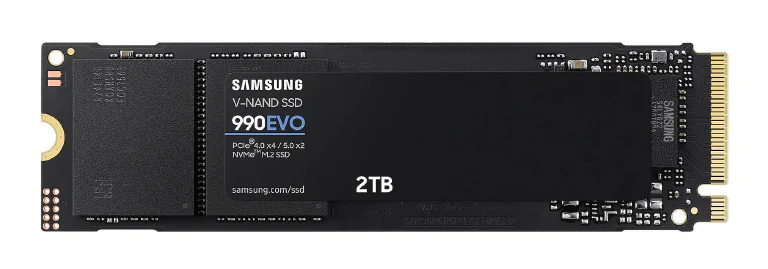
Why? It’s all about consistency. While other drives might beat it in one specific, synthetic benchmark, the 990 Pro, powered by Samsung’s own in-house controller and V-NAND memory, delivers phenomenal performance across the board. Its real strength is its sustained performance. After its large SLC cache is exhausted, the drive’s write speeds remain incredibly high and stable, which is a sign of a top-tier controller at work. This is the drive you want for your operating system, your most-played games, and your professional applications. It’s a true workhorse.
The main drawback? It’s a Samsung flagship, and you pay for the name. It’s typically priced at a premium, around $100-$120 for a 1TB model. You also have to be wary of fakes on marketplaces, so I always recommend buying from authorized retailers like Best Buy, Newegg, or directly from Samsung’s website. It’s a premium product, but in my opinion, the peace of mind is worth the extra ten bucks.
The Gamer’s Choice: WD Black SN850X
If the 990 Pro is the professional’s choice, the WD Black SN850X is the one built for us gamers. On paper, its specs are very similar to the Samsung drive, offering blistering read/write speeds that will make your game loading screens practically disappear.
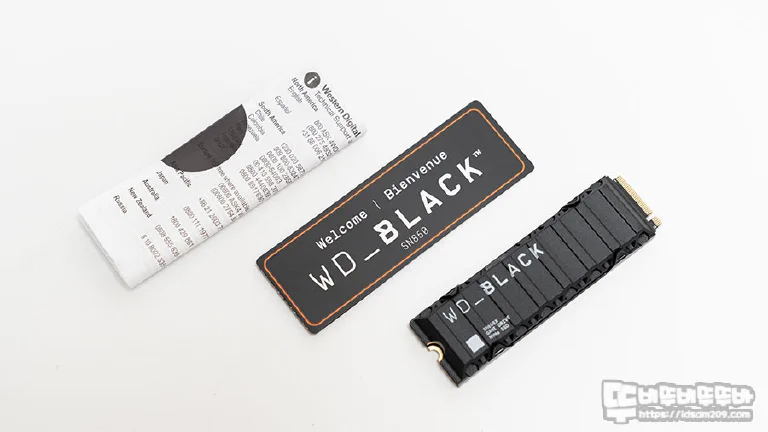
Where it carves out its own identity is in the software. Western Digital’s Dashboard software includes a feature called “Game Mode 2.0.” Now, normally I’d call this marketing fluff, but my testing and analysis from others in the tech community show it actually does something. It essentially disables the drive’s low-power states and optimizes its predictive caching algorithms for the large, sequential read patterns that are typical of loading game assets. The real-world difference is minor—maybe a fraction of a second in loading times—but for gamers who want to squeeze out every last drop of performance, it’s a compelling feature.
It’s a fantastic alternative to the 990 Pro, often available for a slightly lower price (around $90-$110 for 1TB). If you’re building a pure gaming rig, the SN850X is an absolutely top-tier choice. A word of warning: this drive can run hot under heavy load, so I highly recommend either getting the version with the heatsink or ensuring your motherboard has its own M.2 heatsinks.
The Budget Champion: Fanxiang S770
Now for my favorite part: finding the hidden gems. For years, buying a budget NVMe drive meant getting a slow, DRAM-less piece of junk. That has completely changed, thanks to brands like Fanxiang. The S770 is a drive that has no right to be as good as it is for the price.
I was skeptical too, but the hardware tells the story. It uses a high-quality Innogrit IG5236 controller (the same one found in much more expensive drives) and has a DRAM cache. In real-world use, its performance is shockingly close to the big-name flagships, especially in gaming and boot times. The main compromise is in very heavy, sustained write tasks, where it might slow down a bit sooner than a 990 Pro, but for 95% of users, this difference is purely academic.
The real kicker is the price. You can often find a 2TB version for the price of a 1TB drive from Samsung or WD (around $110-$130). This makes it an unbelievable value proposition for a secondary game drive. The best place to find these is on AliExpress or Amazon. Just be sure to buy from a highly-rated seller.
NVMe PCIe 5.0 - For Those with Money to Burn
Alright, let’s talk about the new monsters on the block. PCIe 5.0 drives, like the Crucial T705, are capable of absurd speeds—we’re talking over 14,000 MB/s. They are a marvel of engineering. They also require a brand new motherboard and CPU to support them, cost a small fortune, and generate so much heat that they require a chunky heatsink, sometimes even with a tiny fan.
So, who are these for? Honestly, not for gamers. No game in 2025 can take advantage of these speeds. The difference in loading times between a fast Gen4 drive and a Gen5 drive is literally zero. These drives are for a very specific professional: the 8K video editor, the 3D artist working with massive uncompressed files, or the data scientist who needs to move colossal datasets. For them, time is money, and shaving minutes off a multi-hour render is worth the high cost (often $300+ for 2TB). For everyone else, it’s just a way to burn money for bragging rights.
SATA 2.5" - The Unsung Hero
In the age of NVMe, it’s easy to forget about the humble 2.5" SATA SSD. But I’m here to tell you it still has two very important jobs.
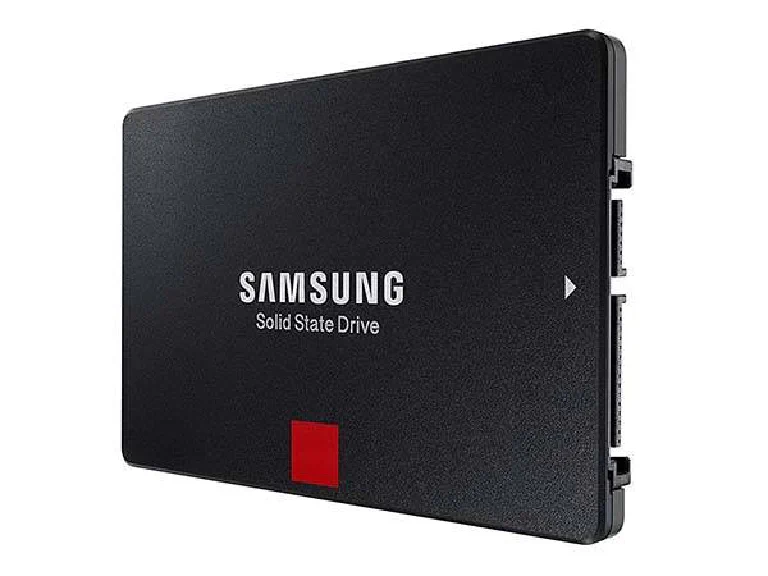
First, it’s the ultimate upgrade for an old laptop or desktop that doesn’t have an M.2 slot. Swapping an old mechanical hard drive for a SATA SSD like the Samsung 870 EVO or Crucial MX500 is the single most transformative thing you can do for an aging machine. It will feel like you bought a brand new computer for under $100.
Second, it’s the perfect bulk storage drive for your game library. A high-quality 2TB or 4TB SATA SSD is significantly cheaper than its NVMe equivalent. While the initial game load might be a few seconds slower than from an NVMe drive, the in-game performance will be identical. For storing dozens of games you don’t play every day, a big SATA drive is the smartest, most cost-effective solution. The Samsung 870 EVO remains my top pick here for its proven reliability and performance.
Data on the Go: My Top Picks for Portable SSDs
Alright, we’ve sorted out the storage inside your machine. But what about when you need to take your data with you? In 2025, the days of slow, fragile portable hard drives are over. A portable SSD is a must-have for students, creatives, and anyone who needs to move large files quickly and reliably. But just like with internal drives, not all portable SSDs are created equal. The market is full of drives with confusing USB standards and wildly different performance claims. Here are my top picks that cut through the noise.
The All-Rounder Champion: Samsung T9
If you just want the best, most reliable portable SSD for general use, buy the Samsung T9. It’s the successor to the legendary T7, and it’s the benchmark against which all other portable drives are measured.
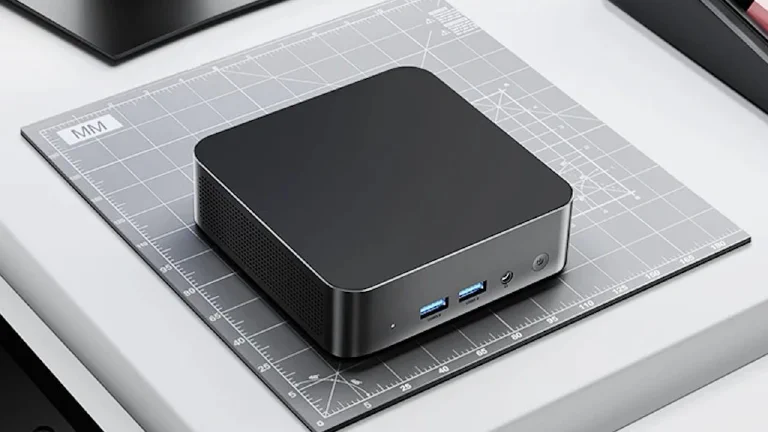
What makes it the champion? It’s the combination of speed and build quality. The T9 uses a USB 3.2 Gen 2x2 interface, which is a fancy way of saying it can hit speeds of up to 2,000 MB/s. Now, here’s my no-BS caveat: to get those speeds, your computer’s USB-C port must also support the 2x2 standard, which is still not super common. But here’s the magic: even on a regular, older USB port, it’s still incredibly fast, and it’s future-proof for your next machine.
The build quality is fantastic. It has a rugged, rubberized shell that can easily survive being tossed in a backpack. In my opinion, its only real downside is the price. As a Samsung flagship, it carries a premium, typically around $140 for a 1TB model. You can find it everywhere—Best Buy, Amazon, Samsung’s website—but it’s a popular item, so sales are modest. If your work depends on fast, reliable external storage, this is the safe, correct choice.
The Rugged Adventurer: SanDisk Extreme Portable V2
For photographers, videographers, and anyone who actually uses their gear out in the real world, the SanDisk Extreme Portable is a legend. I’ve had one of these clipped to my camera bag for years, and it’s taken a beating.
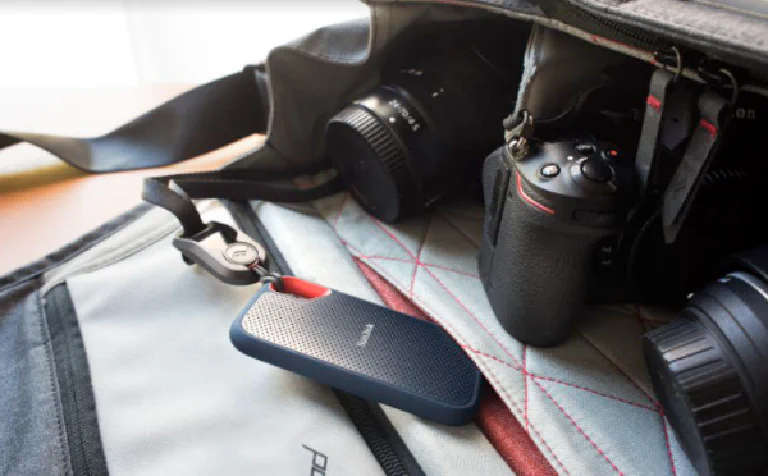
Its main selling point isn’t raw speed (though it’s still plenty fast, at around 1,050 MB/s over a standard USB 3.2 Gen 2 port). Its strength is its durability. It has an IP65 rating for water and dust resistance, and its tough, rubberized body is rated for drops of up to three meters. The integrated carabiner loop is a genuinely brilliant design choice, making it easy to secure to a bag so it never gets lost.
This is the drive I recommend to all my creative friends. It’s fast enough to edit photos and even 4K video directly from the drive, and it’s tough enough to survive a rainstorm or a drop on the trail. It’s often more affordable than the Samsung T9, with a 1TB model typically costing around $100-$120. This is a tool designed for work, not just for storage.
The Speed Demon: ADATA SE920 (USB4)
Now we get to the fun stuff. If you’re a professional video editor or a power user who has a modern, high-end laptop or Mac with a USB4 or Thunderbolt 4 port, and you need to move absolutely massive files as quickly as humanly possible, then the ADATA SE920 is your weapon of choice.
This drive uses the new USB4 standard, which allows it to reach mind-bending speeds of up to 3,800 MB/s. That’s fast enough to transfer a 100GB video project in under 30 seconds. It’s a level of performance that was pure science fiction for an external drive a few years ago.
But this speed comes with a literal cost: heat. The drive has a unique sliding chassis that opens up to reveal a tiny cooling fan. It’s a clever solution, but it adds a mechanical point of failure. This is not a drive you toss in your bag; it’s a high-performance tool for a specific job. At around $180 for 1TB, it’s an investment for professionals whose workflow can be measured in billable hours saved by faster transfer times. For a deeper dive on what makes these drives tick, check out our guide on The Ultimate Custom PC Build for 2025, where we discuss the motherboards that support these new standards.
The Final Byte: Your Final Instructions
So, there you have it. We’ve journeyed through the treacherous jungle of interfaces, demystified the voodoo of DRAM cache, and put the best drives on the market head-to-head. If you’ve made it this far, you’re no longer a rookie; you’re an informed buyer, armed with the knowledge to make a genuinely smart decision.
The overwhelming conclusion for 2025 is clear: the era of the mechanical hard drive as a primary boot drive is officially over. An SSD isn’t a luxury anymore; it’s the absolute foundation of a responsive, modern computing experience. The question is no longer if you should get one, but which one is the right tool for your specific mission.
- For a new gaming or productivity PC build, your default choice should be a high-quality 1TB or 2TB NVMe PCIe 4.0 drive with DRAM. It’s the undisputed sweet spot of price, performance, and future-proofing. My top picks, the Samsung 990 Pro and WD Black SN850X, are the safe, correct answers here.
- For breathing new life into an old laptop or PC, a 2.5-inch SATA SSD is the most cost-effective, magical upgrade you can perform. A drive like the Samsung 870 EVO will make that old machine feel brand new for less than the cost of a fancy dinner.
- For taking your data on the road, a rugged and reliable portable SSD like the SanDisk Extreme Portable is your best friend. The peace of mind knowing your data is safe from both drops and slow transfer speeds is worth every penny.
My final piece of advice is this: stop tolerating slow. Life is too short to watch loading bars. An investment in a quality SSD is an investment in your own time and sanity. It’s one of the few upgrades you will feel in every single click, every single day. Now go make your machine fly.
